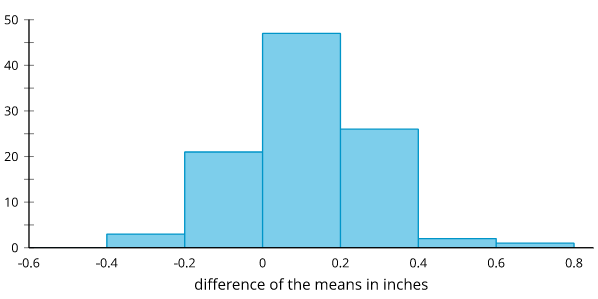Illustrative Math - Algebra 2 - Unit 7 - Lesson 14
By Formative Library
starstarstarstarstar
Last updated about 1 year ago
9 Questions
1
1.
Lin is working on a science experiment. She wants to determine whether salt water boils faster than freshwater. She collects 10 samples of 100 milliliters of salt water and 10 samples of 100 milliliters of freshwater. She places each sample in a beaker on a hot plate. She then records the time it takes to boil for each group and find that the difference in mean times for the groups is 24 seconds.
Lin writes a computer program to recombine all the data into all 184,756 possible different groupings and finds that 4,008 of the different groupings have a difference in means of at least 24 grams. Is there enough evidence for Lin to conclude that the difference in means is due to the addition of salt to the water? Explain or show your reasoning.
S.IC.5
S.ID.4

1
2.
1
3.

1
4.
1
5.
1
6.
1
7.
A plant company is growing plants in the laboratory using their regular soil mix and a new soil mix. The company wants to know which process causes the plants to grow taller at the end of 2 months. The mean height of the 25 plants grown using the regular soil mix is 14.6 inches. The mean height of the 25 plants grown using the new soil mix is 15.1 inches. The company's statistician uses simulations to get a randomization distribution to determine if the results happened by chance. The randomization distribution is displayed in the histogram.

Is it reasonable to conclude that the mean difference between the 2 groups occurred by chance? Explain your reasoning.
S.IC.5
S.ID.4

1
8.
1
9.
This lesson is from Illustrative Mathematics. Algebra 1, Unit 7, Lesson 14. Internet. Available from https://curriculum.illustrativemathematics.org/HS/teachers/3/7/14/index.html ; accessed 29/July/2021.
IM Algebra 1, Geometry, Algebra 2 is © 2019 Illustrative Mathematics. Licensed under the Creative Commons Attribution 4.0 International License (CC BY 4.0).
The Illustrative Mathematics name and logo are not subject to the Creative Commons license and may not be used without the prior and express written consent of Illustrative Mathematics.
These materials include public domain images or openly licensed images that are copyrighted by their respective owners. Openly licensed images remain under the terms of their respective licenses. See the image attribution section for more information.